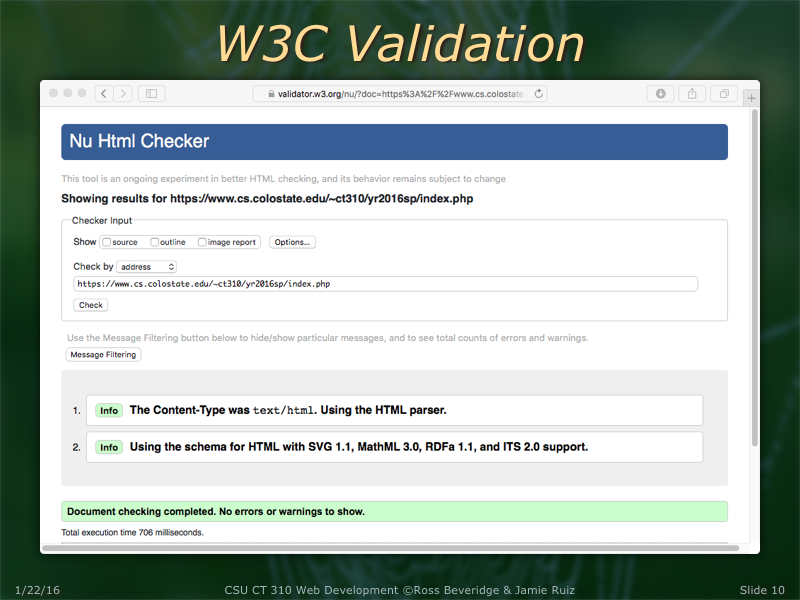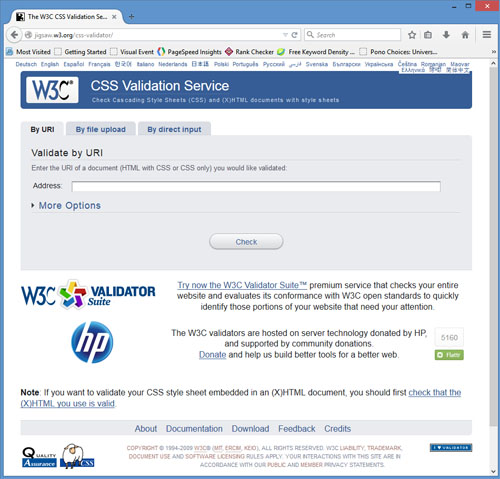

(When we don’t set this parameter, the heading outline doesn’t show.) This helps to see where headings are skipped, because for proper headings it shows a nicely nested tree structure. When set to yes, makes the validator show an outline of the document’s heading elements ( through ). When this parameter isn’t set, the image information doesn’t show. Lets the validator, when set to yes, show a report with information about the page’s images (like their text alternative set by the alt attribute of ). (By default, the W3C Validator says the page couldn’t be found in case of 404 errors instead of validating that error page itself.) Makes the validator, when set to yes, check the error page that the server returns for the specified URL. (When not set, the validator uses the character encoding from our HTML document.) For instance, to process with ASCII character encoding we use charset=US-ASCII per the IANA official names of character encodings. Specifies which character encoding the W3C Validator uses. This way we can see how the web server responds based on the user agent’s preferred/accepted language.

Specifies which language the W3C Validator uses for the Accept-Language HTTP header when it request the document from the website. But there are more query parameters we can use to configure how the W3C Validator behaves (W3C, n.d.): Query parameter That set which live URL the validator should check. The solution above used one query parameter with the link: doc. # Configure the W3C Markup Validator with query parameters This way we can use the link on each page to check the HTML validity of the online version of that page. That variable gives the current page’s relative to the website’s root (like /posts/my-blog-post/). Since the ‘check this page for errors’ link can look out of place on a live production website, in the recipe solution we only showed it on localhost. # Create a local-only HTML validator link in Hugo
W3c htmlvalidator code#
This does has its own disadvantages, though: we validate pages that are already online, and don’t send the current HTML code of our localhost to the W3C Validator. This latter approach is what we use in this recipe. It also accepts an uploaded HTML document or a referrer link to the online page we want to validate.

We can copy and paste HTML code to this validator. One of those online validators is the W3C Markup Validator. An online validator is more intuitive to work with and also shows more context about issues than a command-line program typically does.
W3c htmlvalidator how to#
But for occasionally checking some pages, learning how to use such an external tool simply takes too much time. We can of course validate HTML code with external tools, like a Gulp task or other command line program. That ensures the most browser compatibility and likely won’t hurt search engine rankings either. When we’re tweaking our Hugo theme, it’s a good idea to check the HTML code every now and then. # Discussion: localhost-only code and W3C Validator settings See check if a Hugo website renders on localhost or not for more information. In that case you’ll need to adjust the if statement to explicitly test against the base URL of your live website. When your live production URL also contains the phrase ‘localhost’ (like ) the solution of this recipe doesn’t work.


 0 kommentar(er)
0 kommentar(er)
